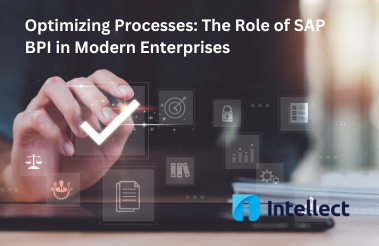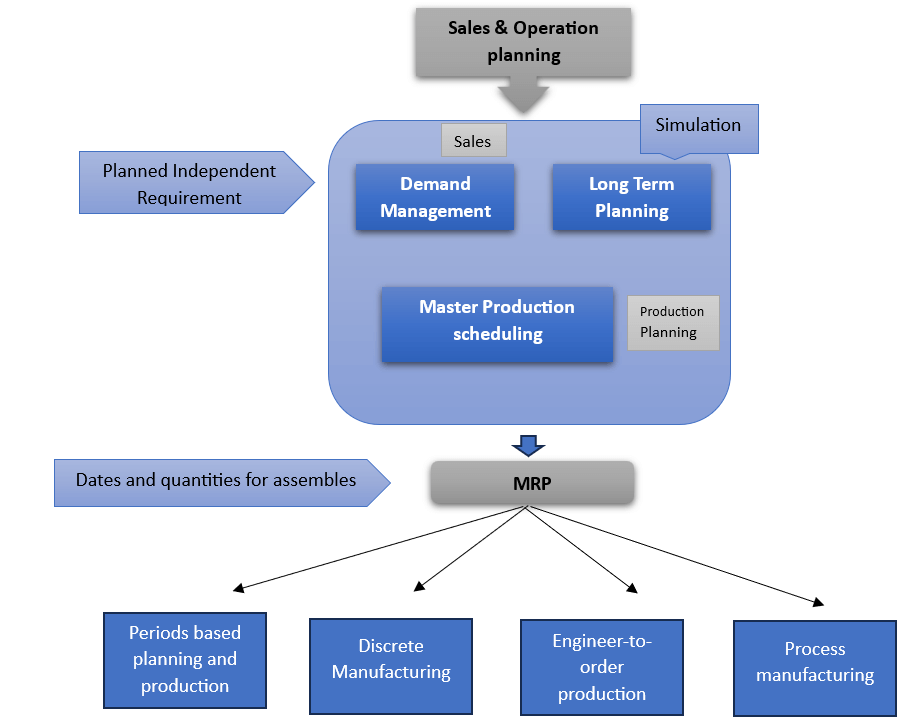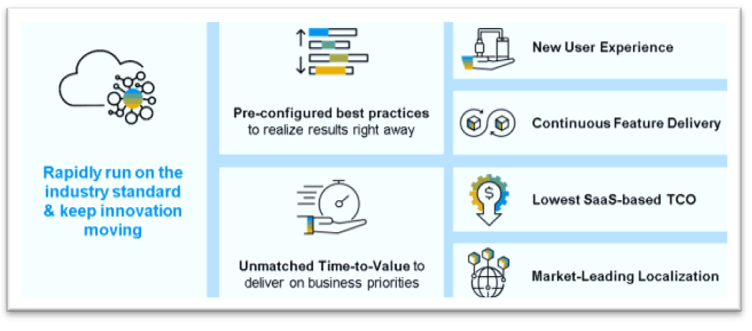In today’s fast-paced business environment, agility and efficiency are paramount for organizations striving to stay competitive. Rapid Application Prototyping (RAP) methodologies have emerged, as a response to the need for accelerated software development cycles without compromising quality. Meanwhile, SAP systems stand as pillars in enterprise resource planning, managing critical business operations and data. Integrating RAP approaches with SAP systems presents a unique set of challenges and opportunities, necessitating a strategic approach to ensure seamless alignment and maximum benefits. This article digs into the strategies and considerations for integrating RAP methodology with SAP systems to deliver efficient and effective solutions.
Understanding Rapid Application Prototyping (RAP)
RAP, also known as Rapid Application Development (RAD), is a methodology focused on rapidly building prototypes or proof-of-concept applications to gather feedback, validate requirements, and accelerate the development process. RAP emphasizes iterative development, collaboration between stakeholders, and rapid iterations to deliver functional software in a short timeframe.
Key principles of RAP include:
- Prototyping: RAP involves creating prototypes or mockups of the final application’s user interface and functionality, allowing stakeholders to visualize the end product early in the development process.
- Iterative Development: RAP follows an iterative approach, where feedback from stakeholders is incorporated into successive iterations of the prototype, ensuring that the final product meets user expectations.
- Quick Turnaround: RAP aims to shorten development cycles by rapidly building and iterating on prototypes, enabling faster time-to-market for software solutions.
- Collaboration: RAP encourages collaboration between developers, designers, and end-users, fostering a shared understanding of project requirements and objectives.
When is RAP most suitable?
- Well-understood Requirements: RAP is ideal when project requirements are stable and transparent. Its iterative nature allows for rapid development cycles aligned closely with known requirements, facilitating efficient progress without extensive rework.
- Time-sensitive Projects: RAP suits projects with tight deadlines that demand swift development and delivery. By emphasizing rapid prototyping, iterative development, and continuous feedback loops, RAP enables teams to expedite the development process and meet aggressive timelines effectively.
- Small to Medium-Sized Projects: RAP is well-suited for smaller initiatives characterized by a manageable scope and a controllable number of team members. Its iterative and collaborative approach fosters agility, enabling teams to navigate project complexities efficiently.
- High User Involvement: RAP thrives in environments where ongoing input and interaction from users are essential. By engaging stakeholders throughout the development process, RAP ensures resulting solutions closely align with user needs, preferences, and expectations, ultimately enhancing user satisfaction and adoption.
- Innovation and Creativity: RAP is particularly helpful in tasks requiring creative inquiry and innovation. Its flexibility, experimentation, and rapid iteration empower teams to explore new ideas, iterate on concepts, and innovate solutions that drive business value and differentiation.
- Prototyping: RAP is indispensable when developing and improving prototypes is a key component of the development process. Facilitating rapid prototyping and iterative refinement, RAP enables teams to quickly validate ideas, gather feedback, and evolve prototypes into fully functional solutions.
- Minimal Technological Complexity : RAP is well-suited for projects with relatively simple technological requirements. In situations where the technological aspects are straightforward and well-understood, RAP’s streamlined approach enables teams to concentrate on delivering value quickly without being hindered by unnecessary complexities.
Challenges and Considerations in Integrating RAP methodology with SAP Systems
Integration Complexity: SAP systems are complex, comprising multiple modules, layers, and databases. Integrating RAP methodology with SAP systems requires a deep understanding of SAP’s architecture, data models, and integration capabilities. Developers must leverage SAP’s APIs, connectors, and middleware to establish seamless communication between RAP applications and SAP systems.
Data Consistency and Security: Maintaining data consistency and security is critical when integrating RAP methodology with SAP systems, which often manage sensitive business data. Developers must adhere to SAP’s data models, access controls, and encryption standards to ensure data integrity and prevent unauthorized access or data breaches.
Customization and Extension: SAP systems offer extensive customization capabilities to meet specific business requirements. RAP methodologies should support the customization and extension of SAP applications, enabling organizations to tailor solutions according to their unique needs without sacrificing development speed or agility.
Scalability and Performance: SAP systems are designed to handle large volumes of data and transactions, necessitating scalable and high-performance. Developers must optimize RAP methodology for scalability, performance, and resource efficiency to ensure seamless integration with SAP systems without causing performance bottlenecks or system failures.
User Experience (UX): SAP systems are renowned for their functionality but may lack intuitive user interfaces. Integrating RAP methodology can enhance the user experience by providing intuitive, user-friendly interfaces that interact seamlessly with SAP systems, improving overall usability and productivity.
Testing and Quality Assurance (QA): Rapid development cycles should not compromise the quality of integrated solutions. Rigorous testing and QA processes are essential to ensure that SAP systems meet the required standards of reliability, functionality, and performance. Automated testing tools and continuous integration practices can streamline the testing process and accelerate delivery cycles.
Strategies for Successful usage of RAP Methodology
Collaborative Approach: Foster close collaboration between development teams, SAP experts, business stakeholders, and end-users throughout the integration process. Establish clear communication channels, regular meetings, and feedback loops to ensure alignment and transparency.
Modular Design: Adopt a modular design approach to facilitate integration and extensibility. Break down SAP customized applications into smaller, reusable components or micro services that can be easily use in various integrations.
API-First Development: Prioritize API-first development, designing RAP applications with well-defined APIs that adhere to SAP’s standards and best practices. Leverage SAP’s APIs, connectors, and middleware to establish robust integration points and minimize dependencies.
Continuous Integration and Delivery (CI/CD): Implement CI/CD pipelines to automate the build, test, and deployment processes. Continuous integration ensures that code changes are integrated into the main codebase frequently, while continuous delivery enables rapid and reliable deployment of new features and updates.
Monitoring and Performance Tuning: Implement robust monitoring and performance tuning mechanisms to detect and address performance issues proactively. Monitor system metrics, logs, and user feedback to identify bottlenecks and optimize the usage of RAP methodology for scalability and performance.
Training and Support: Provide comprehensive training and support to end-users and administrators to ensure smooth adoption and operation of integrated solutions. Offer documentation, tutorials, and hands-on training sessions to empower users by leveraging RAP methodology effectively within the SAP environment.
Tools offered by SAP , that can be used to facilitate RAP.
SAP Fiori Elements: SAP Fiori Elements is a framework that allows developers to create user interfaces for SAP applications rapidly. It provides predefined UI building blocks and templates based on SAP Fiori design principles, enabling developers to create consistent, responsive, and intuitive user interfaces with minimal coding effort.
SAP Business Application Studio: SAP Business Application Studio is an integrated development environment (IDE) that provides a set of tools and features for building, testing, and deploying applications on the SAP Cloud Platform. It supports various programming languages, including JavaScript, TypeScript, and Java, and offers built-in support for SAP Fiori development, Git version control, and continuous integration/continuous deployment (CI/CD) pipelines.
SAP Web IDE: SAP Web IDE is a web-based development environment that enables developers to build and customize SAP Fiori applications, SAPUI5 applications, and SAP Fiori Elements applications. It provides a rich set of features, including code editors, visual layout editors, templates, and wizards, making it easier for developers to create and modify applications quickly.
SAP Cloud Application Programming Model (CAP): SAP CAP is a framework that simplifies the development of business applications on the SAP Cloud Platform. It provides a set of best practices, tools, and libraries for building applications using a model-driven approach. CAP supports various data models, such as Core Data Services (CDS), and offers features for data modeling, service definition, and application logic implementation.
SAP Integration Suite: SAP Integration Suite provides a comprehensive set of tools and services for integrating SAP and non-SAP systems, connecting applications, and orchestrating business processes. It includes capabilities for API management, data integration, event-driven architecture, and process automation, enabling developers to build integrated solutions rapidly.
SAP AppGyver: SAP AppGyver is a low-code/no-code development platform that allows users to create web and mobile applications without writing code. It provides a visual development environment, drag-and-drop components, and pre-built templates, empowering business users and citizen developers to build applications quickly and easily.
SAP Cloud Platform Workflow service: SAP Cloud Platform Workflow service enables developers to design, automate, and execute workflows for business processes. It provides graphical workflow editors, pre-built workflow templates, and integration with SAP and non-SAP applications, facilitating the rapid development of automated business processes.
SAP Build: SAP Build is a cloud-based prototyping tool that allows users to create interactive prototypes of SAP Fiori applications. It provides a library of UI components, templates, and design patterns, enabling designers and developers to collaborate on prototyping and gather feedback from stakeholders early in the development process.
These tools provided by SAP empower developers, designers, and business users to collaborate effectively, iterate quickly, and deliver innovative solutions that meet the evolving needs of businesses and end-users. By leveraging these RAD tools, organizations can accelerate their digital transformation journey and drive business growth.
Integrating Rapid Application Development with SAP systems can enhance agility, efficiency, and innovation. Further, understanding the challenges and strategies involved in applying the RAP, allows businesses to develop scalable, high-performance applications that integrate seamlessly with SAP systems. At Intellect, our experts are ready to support you in leveraging the RAP methodology and relevant SAP tools for your digital transformation journey.























